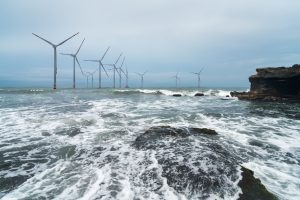Indonesia’s Just Energy Transition Partnership, the $20 billion fund earmarked for investment in clean energy, took a big step forward in November with the release of the Comprehensive Investment and Policy Plan. One of the requirements under the JETP framework is to prepare a roadmap for how Indonesia will accomplish its energy transition goals (peak emissions in 2030, net zero by 2050). This document is the first step. Here are three key takeaways.
First, coal is still going to play a major role in the near-term. Part of the overall decarbonization strategy is, in theory, to retire coal-fired power plants before the end of their useful economic lives. I have long thought this was a hugely difficult puzzle to solve. These power plants can cost billions of dollars to build and investors expect to recoup their capital over many decades of operation.
Such projects involve complex financial and contractual obligations, and early retirement requires renegotiating the contracts and essentially buying out the shareholders and management. There are ways to do this, but they aren’t very palatable as no one wants to be seen doling out cash to owners of coal-fired power plants.
In the current plan, only two plants totaling 1,700 MW of coal-fired capacity will be retired early and these will still run until 2037. The focus will shift instead from early retirement to repurposing of existing coal capacity, meaning much of Indonesia’s coal-fired fleet will continue operating, but efforts will be made to minimize the amount of power they are supplying to the grid.
Captive coal – off-grid power plants built specifically for industries like smelting, and which have seen tremendous growth in recent years – have been omitted entirely from the plan. It was too hard to make the numbers work, so the parties agreed to deal with it later.
Second, $20 billion is not enough. By 2030, total investment needs for Indonesia’s energy transition are estimated to reach $96 billion. This includes $49 billion in dispatchable renewables (mainly geothermal and hydro), $25.7 billion in variable renewables (solar and wind) and nearly $20 billion in transmission and grid improvements. Even if the JETP reaches its full planned commitment over the next five years, it will still be approximately $76 billion short.
That’s not as a big a problem as it might seem. Those figures are just guesses and sources of financing outside of the JETP are plentiful. Indonesia has increasingly deep domestic capital markets, and the balance sheets of its big state-owned banks are solid. The government’s fiscal health is also pretty good at the moment, and this creates opportunities to directly and indirectly plug the financing gap. I imagine China, having been omitted from the JETP, could play a big role in financing renewable energy if it wanted to as well.
Back in 2020, I published a paper arguing that the big challenge in Indonesia’s energy transition is not about mobilizing the financing. It is matching the financing with projects that are ready to be funded at scale and can be planned, approved, built and connected to the grid quickly. This remains the biggest challenge today
Third, solar needs to grow. By a lot, and fast. According to the JETP model, total installed solar capacity needs to reach 29.3 GW by 2030, a quantum leap from the 0.1 GW as of 2022. By 2050, solar will be the main source of Indonesia’s electricity.
To build solar at this scale and pace the JETP calls for a number of policy reforms, including overhauling the business model of state-owned electric utility PLN, improving planning and procurement processes, and having PLN do some of the most difficult parts of project development like land acquisition.
Historically, Indonesia has struggled to attract private investment in renewable energy. It will be critical that PLN is able to onboard more solar at utility scale very quickly if the JETP scenario is to have any chance of success. One of the biggest unknowns at this time is whether the policy enablers detailed in the plan will help accomplish that.
This is a long-term plan, which models highly uncertain possibilities about how the energy sector in Indonesia will evolve over the next three decades (apparently 10,000 MW of nuclear power awaits us in the future). But the next five to 10 years will be what actually matters, because they are the proof of concept.
Emissions from coal power plants are going to increase in the near-term. This is part of the plan. As long as renewable energy is added at a fast enough rate to replace that coal-fired capacity, it will be a strong indicator that things are on track even if they undershoot the highly optimistic projections in the model. The financing, I believe, will be there.
The more important question is whether the right approach and mechanisms are being implemented to match that financing with feasible projects in a way that is suited to Indonesia’s political economy. From my reading of this document, the JETP in its current form seems to lean toward a market-based approach, where PLN and the Indonesian state will use tools like price signals and adjustments of risk allocation to make renewable energy projects more attractive to private developers and financial institutions. That approach has not always been the best fit for Indonesia. Five years from now, I guess we will know if this time is different.

































